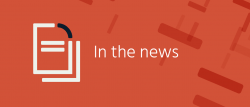It always takes longer than you think

Everyone is aware that it always takes longer to find a problem in a network than it should. Moving through the troubleshooting process often feels like swimming in molasses—you’re pulling hard, and progress is being made, but never fast enough or far enough to get the application back up and running before that crucial deadline. The “swimming in molasses effect” doesn’t end when the problem is found out, either—repairing the problem requires juggling a thousand variables, most of which are unknown, combined with the wit and sagacity of a soothsayer to work with vendors, code releases, and unintended consequences.
It’s enough to make a network engineer want to find a mountain top and assume an all-knowing pose—even if they don’t know anything at all.
The problem of taking longer, though, applies in every area of computer networking. It takes too long for the packet to get there, it takes to long for the routing protocol to converge, it takes too long to support a new application or server. It takes so long to create and validate a network design change that the hardware, software and processes created are obsolete before they are used.
Why does it always take too long? Continue reading






